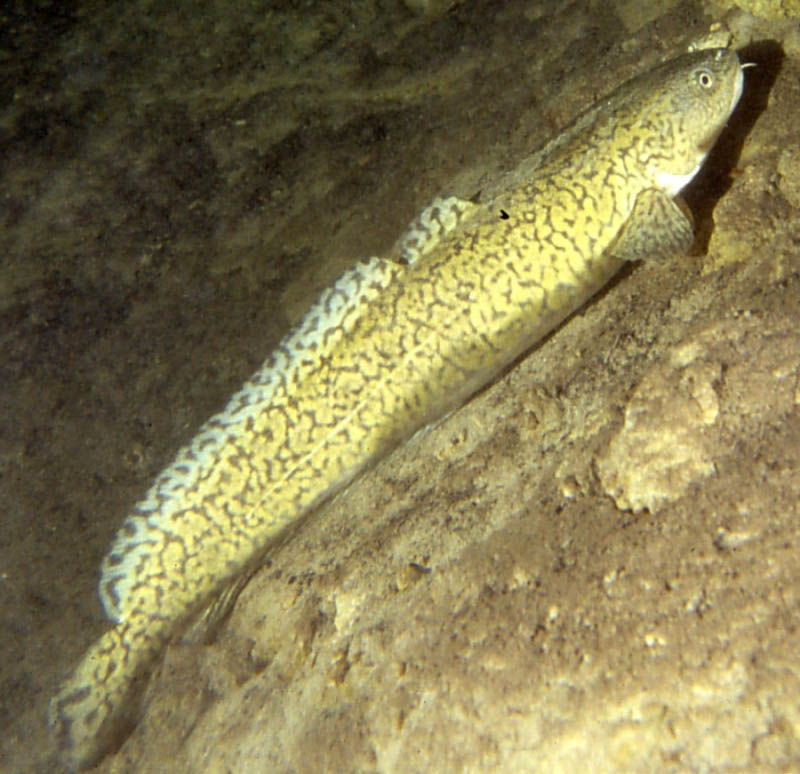As a member of the freshwater cod family, the Burbot fish is similar to cod and haddock. Its firm, white meat is excellent for eating and has been referred to as Poor Man’s Lobster. This cod-like freshwater fish is also been called mariah, freshwater ling, freshwater cusk, lawyer, coney-fish, and eelpout. The species is closely linked with the common marine ling and the cusk. The burbot lives under the ice for some time of the year and requires frigid temperatures to breed.
The Burbot has a serpent-like body with an appearance like a cross between a catfish and an eel, but is easily distinguished by a single barbel on the chin. For each nostril, the body is elongated and compressed laterally, with a flattened head and a single, tube-like projection. In comparison to body size, Burbots have tiny fins that indicate a benthic (at the bottom of a body of water) lifestyle with low swimming endurance and unable to withstand strong currents. During the summer, they are typically found in the colder water below the thermocline.
Usually, spawning seasons occur between December and March, often at exceptionally low temperatures ranging from 1 to 4 ° C under the ice. Burbot spawns most times, but not every year, despite a relatively short season lasting from two to three weeks. Female Burbot fertility varies from 63,000 to 3,478,000 eggs per clutch, depending on body size. Burbot growth rate, lifespan, and age of sexual maturity are closely associated with water temperature; larger, older individuals produce more eggs than smaller, younger individuals. They reach maturity, about the age of five. With mild sexual dimorphism, the average length of the Burbot by maturity is around 40 cm (16 in). Maximum lengths vary from 30 to 120 cm (12 to 47 in), and weights range from 1.0 to 12 kg (2.2 to 26.5 lb). As adults, lamprey, whitefish, grayling, young northern pike, suckers, stickleback, trout, and perch are Burbots diet. Northern pike, muskellunge, and some lamprey species prey upon the Burbot.
Read The Scuba News Canada article about the Newell Eddy
Burbot goes way in history to a book written in England in 1590, noting that Burbot was so common than that it was used to feed hogs.
The International Game Fishing Association (IGFA) honours the world-record Burbot was caught by Sean Konrad on March 27 2010 on Lake Diefenbaker, Saskatchewan, Canada. The fish weighed 11.4 kg (25 lb 2 oz).
Diving Report and Video Submitted by Dusty Klifman
The video is of the Newell Eddy with the Burbots
“So the Newall Eddie sits in 168 feet of cold deepwater of Lake Huron. It was 42°F water temperature on November 7, 2020 (dive day). My dive was one hour and 16 minutes long (76 mins) and the visibility was a bit hazy but decent for late in the season, about 60 feet.”
Dusty Klifman
Follow Dusty Klifman Dive Adventures on Facebook





